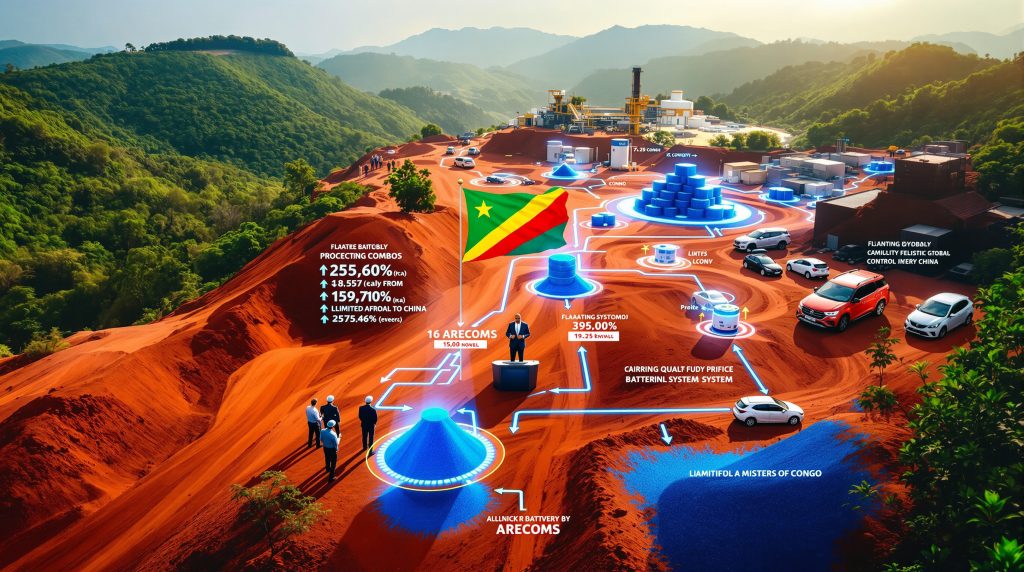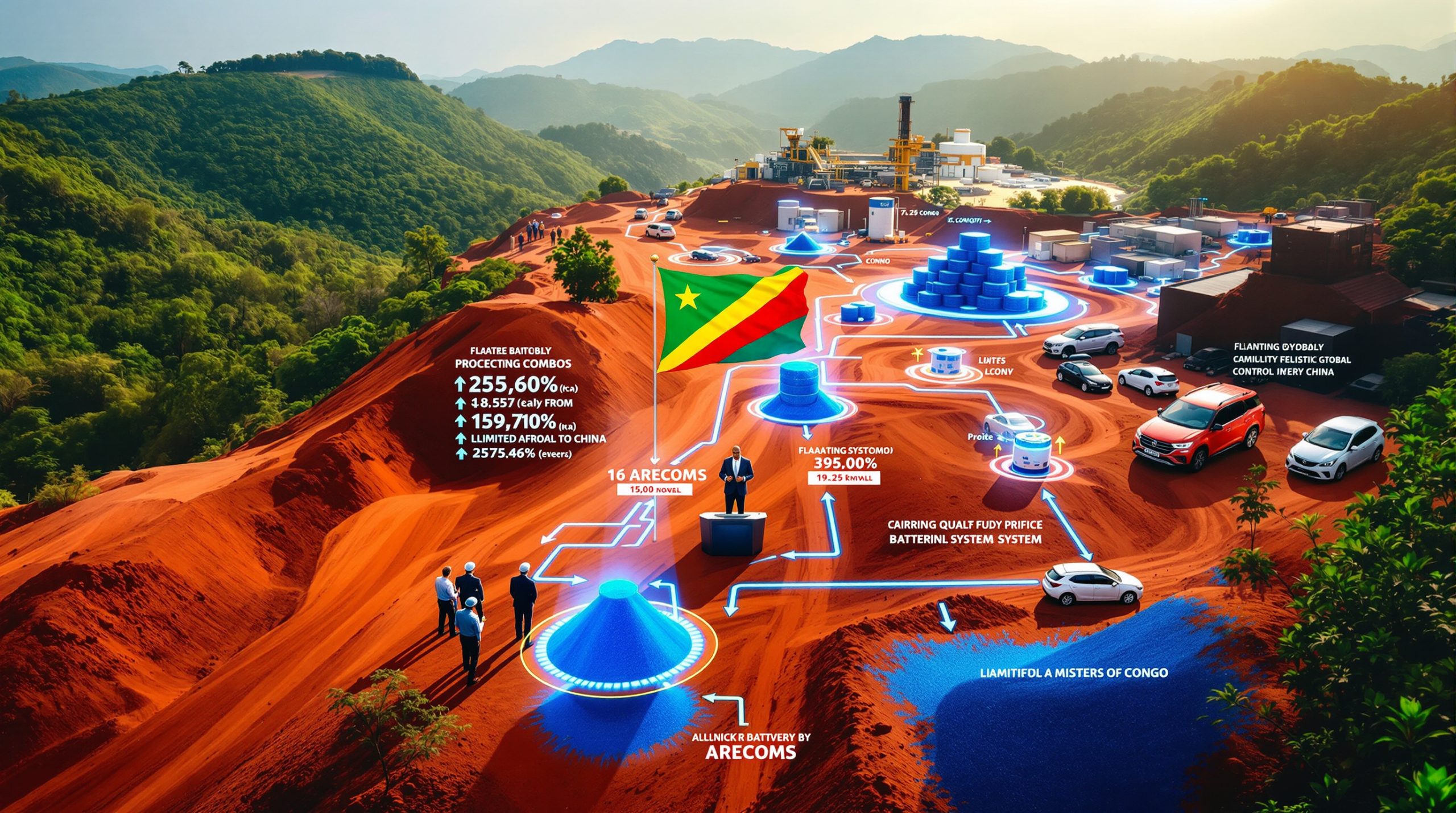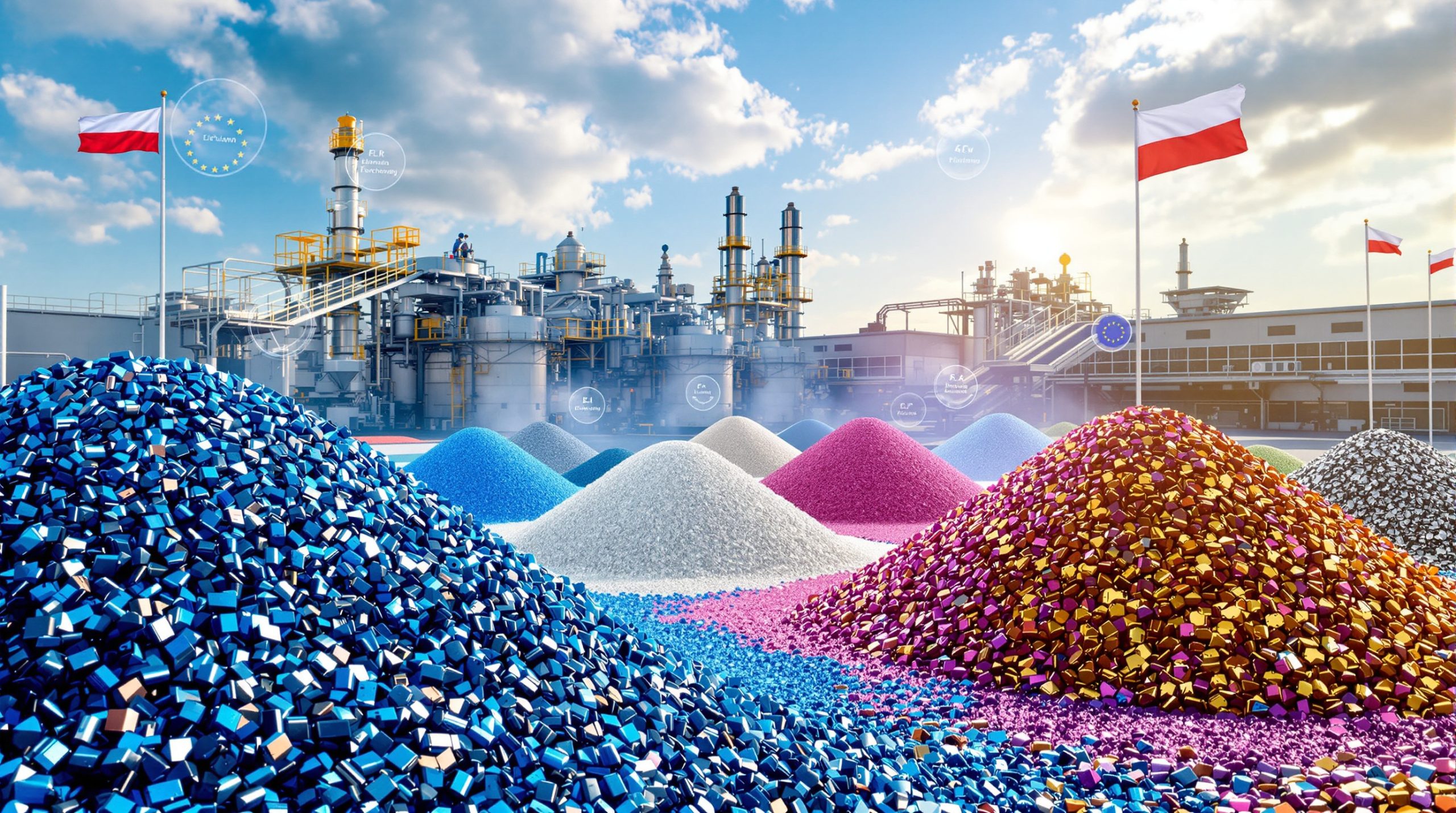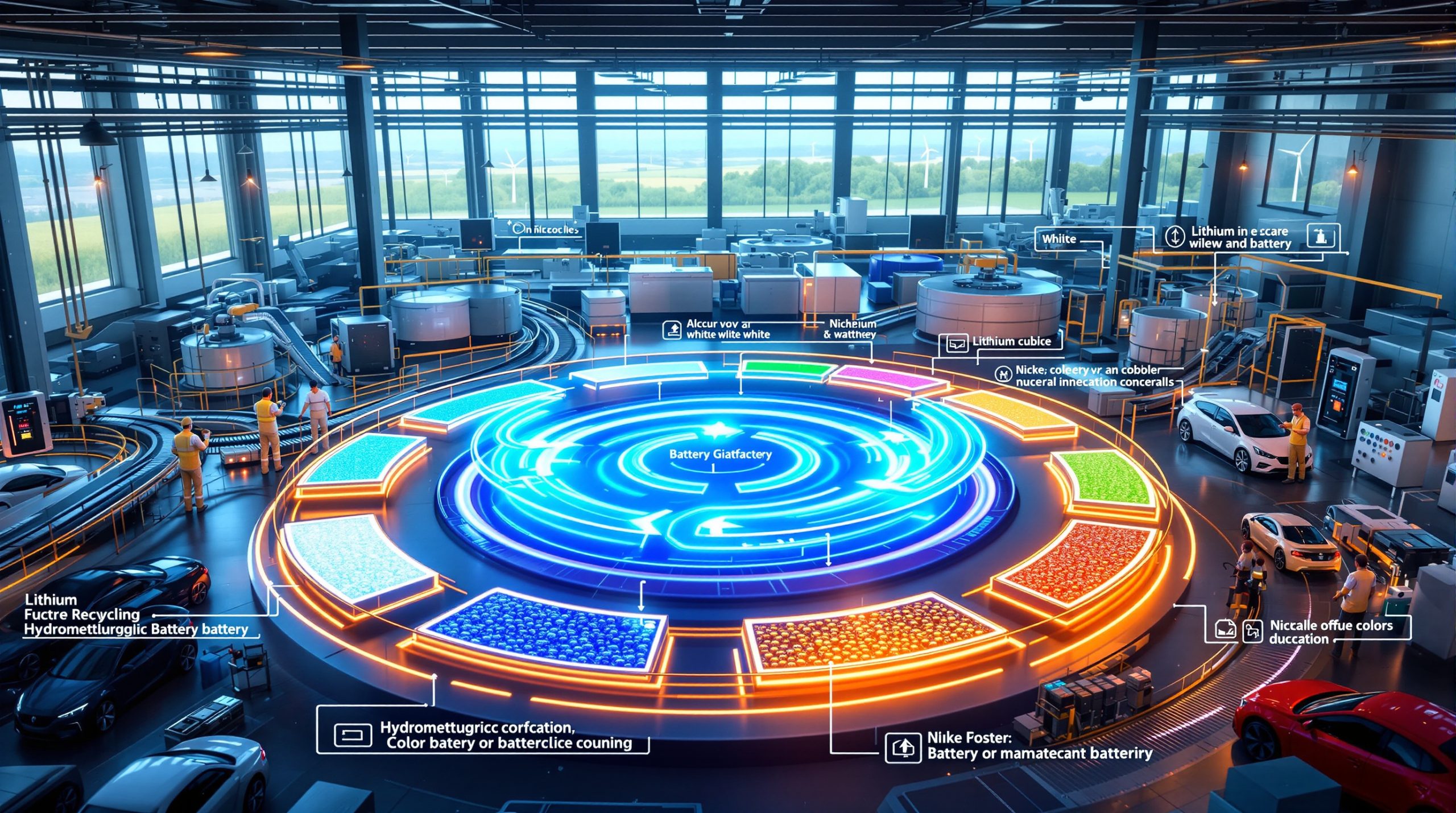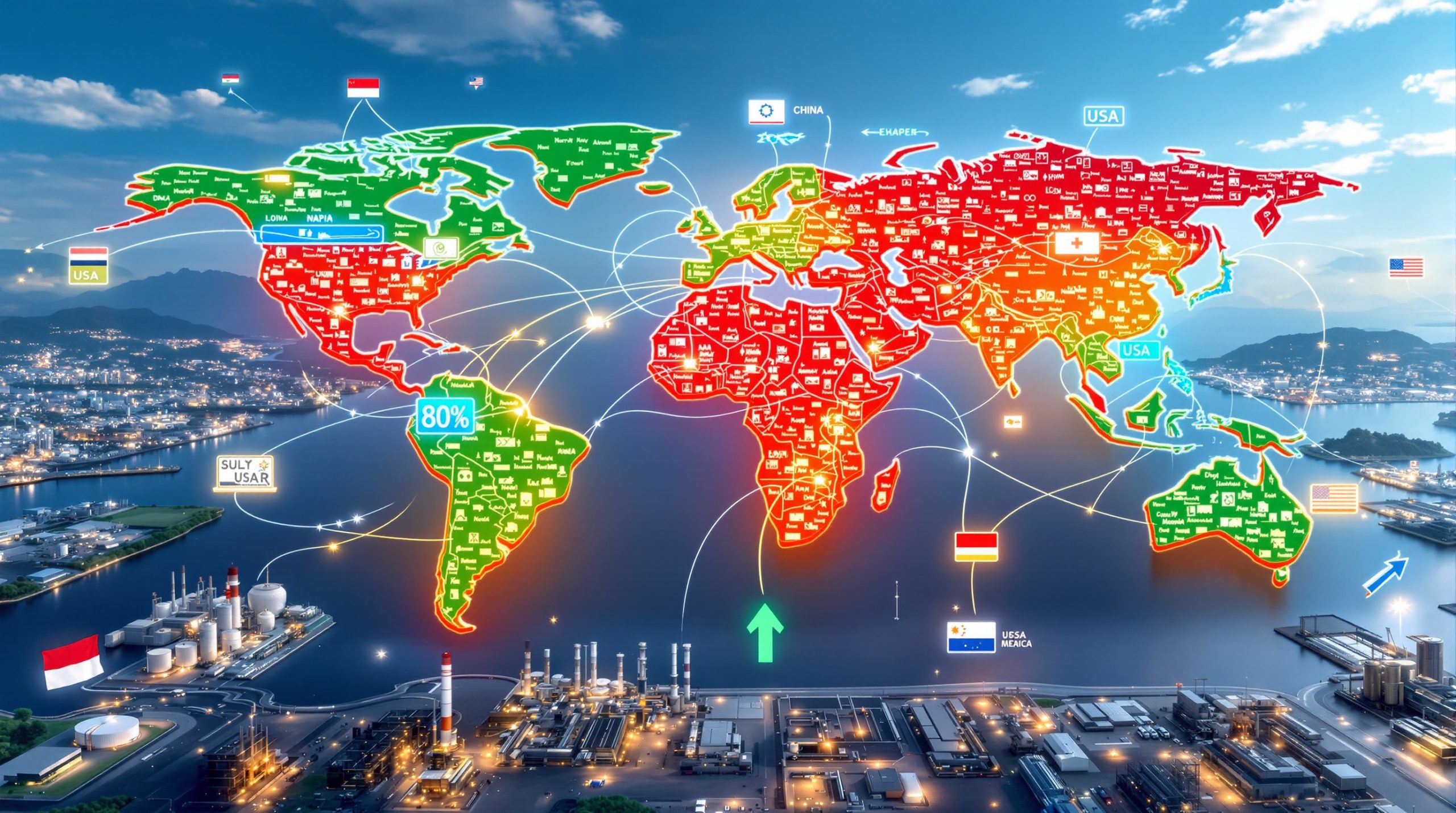Congo's Cobalt Export Quota System: Impact on Global Battery Metal Markets
Understanding Congo's Transition from Ban to Quota System
The Democratic Republic of Congo (DRC) is implementing a strategic shift in its cobalt export policy, moving from a complete export freeze to a structured quota system effective October 16, 2025. This regulatory change represents a significant development for the global cobalt market, as the DRC accounts for approximately 70% of worldwide cobalt production. The quota framework aims to provide controlled market access while maintaining price stability for this critical battery metal.
According to Reuters, the transition comes after prices hit a nine-year low earlier in 2025, prompting the initial export ban in February. The quota system is designed specifically to prevent market oversupply while allowing for controlled exports to resume under strict regulatory oversight.
Key Elements of the New Quota Framework
The quota system establishes specific volume limits based on historical export data. For the remainder of 2025, authorized miners will be permitted to export up to 18,125 metric tonnes of cobalt. Looking ahead, the DRC has set annual export caps at 96,600 tonnes for both 2026 and 2027.
These quotas will be exclusively managed by ARECOMS, the state minerals regulator, which holds sole authority to issue, allocate, and revoke export permissions. This centralized control mechanism represents a significant consolidation of power over Congo's most strategic mineral export.
Why Has Congo Implemented This Export Control System?
Market Stabilization and Price Recovery
The DRC initially halted all cobalt exports in February 2025 after prices hit a nine-year low, creating significant supply constraints in the global market. This intervention has already yielded results, with cobalt prices rebounding approximately 92% since March 2025.
President Tshisekedi has specifically highlighted this price recovery as evidence that the export controls serve as "a real lever to influence this strategic market" after years of what he termed "predatory strategies" by international buyers. This demonstrates Congo's growing awareness of its leverage in the global battery metals investment landscape for critical battery materials.
Preventing Resource Exploitation and Value Leakage
The quota system represents part of a broader strategy to prevent resource exploitation and ensure the DRC captures greater value from its mineral wealth. By controlling export volumes, the government aims to prevent stockpiling abroad, particularly in China, which has historically been the largest importer of Congolese cobalt.
The policy shift reflects growing resource nationalism across critical mineral-producing nations seeking to maximize domestic benefits from their natural resources. This approach aligns with similar strategies emerging in other resource-rich countries like Indonesia with nickel and Chile with lithium.
How Will the Quota System Be Enforced?
Strict Compliance Mechanisms and Penalties
President Tshisekedi has announced that violators of the quota system will face "exemplary sanctions", including permanent exclusion from Congo's cobalt export regime. This zero-tolerance approach signals the government's determination to enforce the new regulations rigorously.
The enforcement authority rests exclusively with ARECOMS, which will monitor compliance and issue penalties for infractions. While specific enforcement protocols haven't been fully disclosed, industry analysts expect sophisticated tracking systems to be implemented to prevent quota violations.
Regulatory Oversight and Transparency Measures
The quota system will incorporate monitoring mechanisms to track export volumes and ensure compliance. While specific details of these oversight measures haven't been fully disclosed, they will likely include documentation requirements, inspection protocols, and reporting obligations for mining companies.
This regulatory framework aims to create transparency in the cobalt supply chain while preventing unauthorized exports. Companies operating in the DRC will need to develop robust compliance systems to document their adherence to the new quota limitations.
What Is the Industry Response to Congo's Export Controls?
Major Producers' Divergent Reactions
The industry response to the DRC's export controls has been mixed, with major producers taking opposing positions. Glencore, the world's second-largest cobalt producer, has publicly supported the quota system, suggesting alignment with the government's market stabilization goals.
In contrast, CMOC Group, China's major cobalt producer and the world's largest, has expressed opposition to the quota framework, highlighting tensions between different stakeholders in the cobalt supply chain. This division reflects broader geopolitical tensions over control of critical minerals energy security.
Force Majeure Declarations and Supply Chain Disruptions
Both Glencore and CMOC Group declared force majeure following the initial export ban in February, signaling significant disruptions to their operations and contractual obligations. These declarations underscore the material impact of the DRC's export policies on global cobalt supply chains.
The disruption has forced downstream consumers to seek alternative sources or draw down existing inventories, creating ripple effects throughout the battery supply chain. Some manufacturers have reportedly accelerated plans to reduce cobalt content in batteries in response to these supply uncertainties.
How Are Global Cobalt Markets Responding?
Price Trends and Market Rebalancing
The cobalt market has responded dramatically to the DRC's export restrictions, with prices rallying approximately 170% from January 2025 lows. This price recovery reflects the fundamental rebalancing of supply and demand dynamics in the global market.
The quota system is expected to maintain this upward price pressure by preventing market oversupply while allowing controlled exports to resume. Market analysts anticipate continued price volatility as buyers and sellers adjust to the new regulatory framework.
Inventory Depletion and Supply Chain Adjustments
Global cobalt inventories have been steadily depleting since the DRC's export ban took effect in February. Chinese refiners, which process the majority of global cobalt, have reported sharply reduced imports of cobalt intermediates.
This inventory drawdown has forced downstream consumers to adapt their procurement strategies and consider alternative supply sources, potentially reshaping long-term cobalt supply chains. Some battery manufacturers have reportedly accelerated development of reduced-cobalt chemistries in response to the supply uncertainty.
What Are the Implications for Electric Vehicle Supply Chains?
Battery Manufacturing Challenges and Cost Pressures
The restricted cobalt supply and resulting price increases present significant challenges for electric vehicle (EV) manufacturers and battery producers. Cobalt is a critical component in high-performance lithium-ion batteries, particularly in nickel-cobalt-manganese (NCM) chemistries widely used in EVs.
The higher cobalt prices will likely increase battery production costs, potentially affecting EV pricing and manufacturer margins. Some industry analysts suggest that a sustained period of high cobalt prices could add $300-500 to the cost of a typical EV battery pack, forcing difficult decisions about passing costs to consumers or absorbing margin reductions.
Acceleration of Low-Cobalt Battery Technologies
The supply constraints and price volatility may accelerate the industry shift toward reduced-cobalt or cobalt-free battery chemistries. Many manufacturers have already been working to decrease cobalt content in batteries due to both cost and ethical concerns.
The DRC's export restrictions could provide additional incentive to accelerate the development and adoption of alternative technologies such as lithium iron phosphate (LFP) batteries or high-nickel formulations. These technologies typically offer lower energy density but may provide greater supply chain security and potentially lower costs over time.
How Does Regional Conflict Affect Congo's Cobalt Sector?
Security Challenges in Eastern Mining Regions
The DRC's cobalt export policies are being implemented against a backdrop of escalating conflict in the country's mineral-rich eastern regions. Fighting between M23 rebels and government forces has resulted in thousands of casualties and hundreds of thousands of displaced people.
While most cobalt mining occurs in the southern provinces away from the primary conflict zones, the broader security situation creates additional uncertainty for the mining sector. Political instability could potentially affect the government's ability to enforce the new quota system consistently.
Impact on Investment Climate and Development Initiatives
The ongoing conflict complicates efforts to attract Western investment to the DRC's mining sector. A recent U.S.-backed peace initiative faced a setback when the DRC and Rwanda failed to sign a Regional Economic Integration Framework agreement that was intended to make both countries' mining sectors more attractive to Western investors.
This highlights the complex interplay between security concerns, resource governance, and international investment in the region. The DRC's ability to effectively implement its cobalt export strategy may be influenced by these broader security and political dynamics.
What Are the Long-Term Market Implications?
Supply Deficit Risks and Strategic Stockpiling
The Congo cobalt export ban raises the prospect of a sustained cobalt supply deficit in global markets if demand continues to grow with the expansion of EV production and energy storage systems. This supply risk may prompt consuming countries and manufacturers to consider strategic stockpiling of cobalt.
Some analysts predict that major battery producers and automotive manufacturers may begin building larger inventory buffers of cobalt-containing materials to hedge against future supply disruptions. This stockpiling behavior could further tighten market conditions in the near term.
Geographical Diversification of Cobalt Supply
The supply constraints from the DRC are likely to intensify efforts to develop alternative cobalt sources in more politically stable jurisdictions. Countries like Australia, Canada, and Indonesia may see increased investment in cobalt exploration and production as battery manufacturers and automakers seek to diversify their supply chains.
However, developing significant new cobalt production outside the DRC faces geological challenges, as the country's deposits are uniquely rich and extensive. Alternative sources often have lower grades and higher production costs, which may limit their competitiveness even in a higher price environment.
How Should Stakeholders Navigate the New Cobalt Landscape?
Strategies for Downstream Consumers
Manufacturers reliant on cobalt should consider developing robust risk mitigation strategies, including:
- Diversifying supply sources beyond the DRC where possible
- Securing long-term supply agreements with established producers
- Investing in recycling technologies to recover cobalt from end-of-life products
- Accelerating research into reduced-cobalt battery formulations
- Engaging with the DRC government to establish predictable supply relationships
These approaches can help companies build resilience against both short-term supply disruptions and long-term structural changes in the cobalt market.
Investment Considerations in the Cobalt Sector
For investors in the cobalt sector, the DRC's export controls create both risks and opportunities:
- Established producers with secure quota allocations may benefit from higher prices
- Companies with cobalt assets outside the DRC may see increased valuation
- Battery recycling breakthrough ventures could attract greater interest as secondary supply becomes more valuable
- Exploration companies targeting cobalt deposits in stable jurisdictions may attract premium valuations
Investors should carefully assess company exposure to DRC regulatory risk and potential for supply chain disruptions when evaluating cobalt-related investments.
What Does This Mean for Global Critical Mineral Governance?
Precedent for Resource-Producing Nations
The DRC's assertive stance on cobalt exports may establish a precedent for other resource-rich nations seeking greater control over critical minerals. Countries with significant lithium, nickel, or rare earth element deposits may consider similar export controls or value-addition requirements as they recognize the strategic importance of these resources in the energy transition.
This trend toward resource nationalism could reshape global supply chains for critical minerals and potentially accelerate efforts to develop alternative materials or recycling technologies to reduce dependency on geographically concentrated resources.
International Coordination and Supply Chain Resilience
The cobalt situation highlights the need for improved international coordination on critical mineral supply chains. Consuming nations may need to develop more collaborative approaches with producing countries, potentially including technology transfer, infrastructure development, and processing investments.
These collaborative models could help ensure stable, ethical supply while respecting producer countries' sovereignty over their resources. Without such coordination, critical mineral markets may face continued volatility and supply challenges as producing nations increasingly assert control over their strategic resources.
FAQ: Congo Cobalt Export Controls
When will Congo's cobalt export ban officially end?
The Democratic Republic of Congo's complete cobalt export ban will officially end on October 16, 2025, when it will be replaced by the new quota system managed by the state minerals regulator ARECOMS.
How much cobalt will Congo allow to be exported under the new system?
For the remainder of 2025, the DRC will permit exports of up to 18,125 metric tonnes of cobalt. For 2026 and 2027, annual export quotas are set at 96,600 tonnes per year.
Which companies are most affected by Congo's cobalt export policies?
Major cobalt producers operating in the DRC, including Glencore and CMOC Group, are directly affected by the export policies. Both companies declared force majeure following the initial export ban in February 2025.
How have cobalt prices responded to Congo's export restrictions?
Cobalt prices have rebounded approximately 92% since March 2025 and have rallied about 170% from January 2025 lows, demonstrating the significant market impact of the DRC's export policies.
Will Congo's export quotas affect electric vehicle production?
The restricted cobalt supply and resulting price increases could potentially increase battery production costs, affecting EV pricing and accelerating the shift toward electric vehicles transformation with reduced-cobalt or cobalt-free battery technologies.
Further Exploration
Readers interested in learning more about global cobalt markets and supply chains can also explore related educational content available from Mining.com, which offers regular updates on developments in the critical minerals sector. Additionally, new initiatives like the Halls Creek cobalt expansion represent important developments for diversifying global cobalt supply.
Looking to Stay Ahead of Market-Moving Mineral Discoveries?
Discover why major mineral discoveries can lead to exceptional returns by exploring Discovery Alert's dedicated discoveries page, where their proprietary Discovery IQ model delivers real-time notifications on significant ASX mineral announcements, giving you the market-leading advantage before the broader market reacts.
